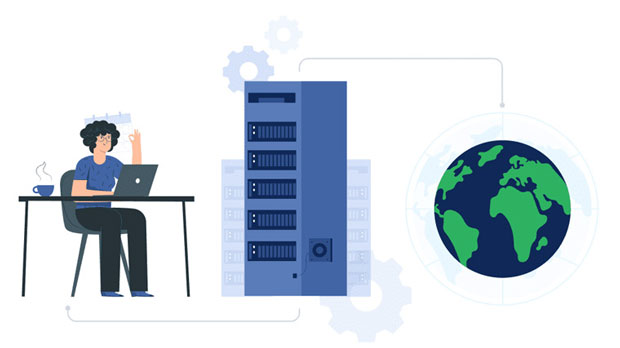Infinite rotation proxy is a tool widely used in many online operations for privacy, security, and data scraping. However, how it functions can vary depending on the browser or tool being used. This article explores the key differences in the use of infinite rotation proxies across various browsers and tools. We’ll analyze the impact these differences have on users, looking at aspects like speed, anonymity, and compatibility with different websites. By the end of this article, you will gain a clearer understanding of how to choose the right proxy setup based on the specific browser or tool you use. What is Infinite Rotation Proxy?An infinite rotation proxy involves the use of multiple IP addresses that constantly rotate, ensuring the anonymity and privacy of users. This method is frequently used to bypass geographic restrictions, prevent IP-based blocking, and scrape data from websites. Unlike traditional proxies, where the same IP might be used for long periods, infinite rotation proxies continuously assign new IPs, which helps reduce the risk of detection by anti-bot systems.The Importance of Understanding Browser DifferencesDifferent browsers offer varying levels of support and interaction with proxies. Browsers like Chrome, Firefox, and Safari each handle proxies in distinct ways, often resulting in differing user experiences when using infinite rotation proxies. Understanding these differences can help optimize proxy performance, speed, and the level of anonymity for each browser.1. Browser-Specific Differences1.1 Google ChromeGoogle Chrome, being one of the most popular browsers, offers robust proxy support. When using infinite rotation proxies in Chrome, users often experience high-speed performance due to Chrome’s advanced caching mechanism. However, one key drawback is its susceptibility to detection by websites using anti-bot tools. Websites often rely on behavioral analysis and cookies, which Chrome is highly prone to leaving traces of. Therefore, users should regularly clear cookies and browsing history or use extensions like "Incognito Mode" for enhanced privacy.1.2 Mozilla FirefoxMozilla Firefox offers more control over proxy settings compared to Chrome. The browser allows users to configure multiple proxy options directly within the settings, making it easier to switch between proxies. Firefox is also known for its privacy-focused features, such as Enhanced Tracking Protection, which can provide additional security when using infinite rotation proxies. However, Firefox users might face slower speeds compared to Chrome, as the browser is not as optimized for handling high volumes of data traffic in proxy-heavy environments.1.3 Apple SafariSafari is known for its tight integration with macOS, providing a smoother experience for users within the Apple ecosystem. However, when it comes to using infinite rotation proxies, Safari may offer less flexibility compared to other browsers. Proxy settings must typically be configured at the system level rather than within the browser, which can be inconvenient for users who frequently switch proxy settings. Additionally, while Safari provides strong privacy protections, its compatibility with proxies can be inconsistent, particularly when dealing with websites that rely on JavaScript or dynamic content.1.4 Microsoft EdgeMicrosoft Edge has undergone significant improvements over the years, particularly with its transition to the Chromium engine. Like Chrome, it supports infinite rotation proxies well, and it benefits from the same speed advantages. However, Edge users face similar challenges related to tracking and cookie persistence. One advantage of Edge, however, is its integration with Microsoft’s security features, which may help protect user privacy when using proxies.2. The Impact of Tools and Extensions on Proxy Performance2.1 Proxy Management ToolsProxy management tools allow users to better handle infinite rotation proxies by providing features like automatic proxy switching, load balancing, and IP rotation scheduling. Tools such as Proxy Switcher and Proxy Rotator enable seamless integration with browsers and ensure that the proxy rotation remains consistent. These tools are particularly beneficial for large-scale web scraping projects or when managing a large number of proxy requests.2.2 Extensions for Browser IntegrationBrowser extensions can significantly enhance the experience of using infinite rotation proxies. Extensions like FoxyProxy for Firefox or Proxy Switcher for Chrome allow users to quickly toggle between proxies without needing to manually configure proxy settings in the browser. These extensions also ensure that the IP rotation is transparent, which is essential for maintaining anonymity. However, users should be cautious when using third-party extensions, as some may introduce security risks or slow down the browser's performance.3. The Role of Operating SystemsOperating systems also play a critical role in how infinite rotation proxies perform across different browsers. For instance, macOS might offer better integration with Safari, while Windows users may experience better performance with Chrome or Edge. Linux users, often the go-to for advanced users, have more flexibility in setting up proxies through system-wide configurations, which can optimize proxy usage for all browsers.4. Speed and Performance: A Comparative Overview4.1 Speed Differences in BrowsersSpeed is one of the most important factors when choosing an infinite rotation proxy. Browsers like Chrome and Edge tend to offer better speed performance, thanks to their efficient rendering engines and more extensive support for concurrent connections. Firefox, while secure, can experience slower speeds when using proxies due to its conservative approach to network requests.4.2 Factors Affecting SpeedSeveral factors affect proxy speed, including the location of the proxy server, the number of proxies in the rotation pool, and the quality of the proxy provider. Browsers with better support for parallel processing, such as Chrome, can handle faster rotations and minimize latency. In contrast, browsers like Firefox may struggle when dealing with multiple simultaneous proxy requests, leading to slower response times.5. Anonymity and Privacy Considerations5.1 Browser Privacy FeaturesBrowsers with strong privacy features, like Firefox, provide enhanced protection against fingerprinting and tracking, which is especially important when using infinite rotation proxies. While Chrome offers some privacy settings, it is still highly susceptible to tracking via cookies and fingerprinting. Therefore, for those focused on maximum anonymity, Firefox with the right proxy settings will offer the best protection.5.2 Proxy Features Affecting AnonymityThe quality of the infinite rotation proxy itself is critical to ensuring maximum anonymity. Some proxies rotate so frequently that websites cannot track the user’s activity across sessions, while others might leak identifiable information such as the user’s original IP or DNS queries. Users should ensure that their proxies have good security features to avoid these risks.Conclusion: Selecting the Right Proxy for Your Browser and ToolWhen using infinite rotation proxies, it’s essential to consider the browser or tool that best suits your needs. Chrome and Edge provide high-speed performance, while Firefox offers superior privacy features. However, the speed and anonymity of proxies also depend on external tools and configurations. Users should choose proxy management tools and browser extensions that optimize rotation and maintain privacy. Ultimately, understanding the differences across browsers and tools will allow users to make informed decisions, ensuring their online activities remain secure and efficient.
Oct 24, 2025



































































